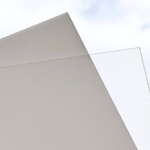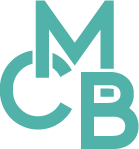
MASKING MATERIALS & OPTIONS
Why Are Some Acrylic Sheets Paper Masked and Others Plastic Masked?
If you’ve browsed our acrylic sheet options, you might’ve noticed that some arrive with paper masking, while others come with clear plastic. So, what’s the difference?
For certain types of acrylic; especially those with unique finishes or designs, plastic masking is easier for manufacturers to apply and protects the surface during transport. And because many of our specialty sheets are visually distinct, we leave the clear plastic on intentionally. This helps earring and sign makers preview the pattern or grain and line up their files with precision.
Want Paper Masking Instead?
Good news! We offer an upgrade option for paper masking. We use a high-quality, industrial sign supply masking and apply it with our cold press machine to ensure a smooth, bubble-free adhesion.
Paper masking is preferred by most laser makers who engrave, since it holds up better under heat and offers cleaner results. If that sounds like you, you can read more about the benefits of paper masking here.
DIY Alternatives to Paper Masking
Not ready to upgrade yet? Or maybe you’re in a pinch and need a quick fix? Here are some alternative options:
-
Painter’s Tape
This is a solid backup option. It’s easy to find, affordable, and works well for both wood and acrylic. While it’s not ideal for every project or cost-effective long term, it’s perfect if you’re just getting started or testing things out. -
Dish Soap Method
Yes, really! Peel off the plastic masking, then apply a thin, even layer of dish soap over the acrylic. You can use your hand, a sponge, or a brush. Dish soap acts as a natural flame retardant and can help minimize flashback and charring. Once you’re done cutting, just rinse the sheet clean. Watch more about this here. -
Paper Towel Trick
Place a slightly damp (not soaking) paper towel between your acrylic and the laser bed. This adds just enough of a barrier to help reduce flashback. It’s especially useful when working with mirror acrylic.
Bonus Tip: When You Don’t Need Any of That
These days, with our Thunder Laser and its powerful airflow options, we rarely need masking at all. For most cuts, simply raising the acrylic off the bed using a few scraps around the edges and center is enough to eliminate flashback. While the Glowforge is a great machine for hobby and small-scale work, tools like the Thunder really take things up a notch in both speed and precision.
Prev post

Acrylic Size & Thickness Variances
Updated on 01 February 2023
Next post

Is Acrylic Good for Outdoor Use?
Updated on 18 January 2023







